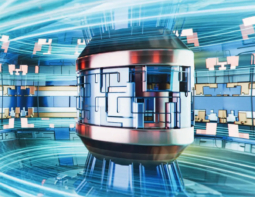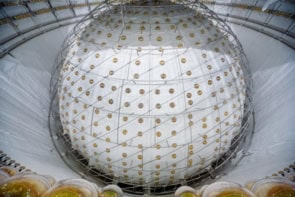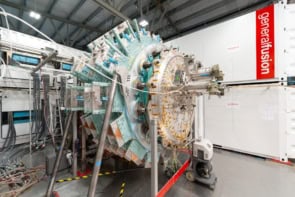
An important step towards creating an extremely accurate clock based on a nuclear transition has been taken by an international team of physicists. Yuri Shvyd’ko at Argonne National Laboratory in the US and colleagues have achieved the resonant excitation of a nuclear transition in scandium-45. The transition could be used to create a nuclear clock with the potential to be much more accurate that the best atomic clocks available today.
Central to the operation of any clock is an oscillator that delivers a signal at a steady frequency. This could be the swinging of a pendulum or the piezoelectric vibration of a quartz crystal. Today, the second is defined by clocks that use the frequency of microwave radiation that is emitted from caesium atoms. Even more accurate atomic clocks use higher-frequency light from atomic transitions to create time signals. Today’s best clock is accurate to better than one part in 1018 – which means that it would take over 30 billion years for the clock’s timekeeping to accumulate a deviation of more than 1 s.
In principle, even more accurate clocks could be made using higher-frequency nuclear transitions. One further benefit of nuclear clocks over atomic clocks is that nuclei are much more compact and stable than atoms. This means that a nuclear clock would not be as susceptible to noise and interference from the surrounding environment.
Resonance needed
However, there are many challenges facing those trying to create nuclear clocks. This includes how to produce coherent radiation that is resonant with a nuclear transition – something that is needed to produce a time signal. In an atomic clock this is done by locking the frequency of a maser or laser to an atomic transition.
“With the advent of advanced X-ray free-electron lasers (XFELs) in the past decade or so, alternative nuclear-clock oscillators are now within reach of direct photon excitation,” Shvyd’ko says. “The extremely narrow bandwidth, 12.4 keV transition in scandium-45, with its long lifetime of 0.47 s, is the most promising.”
However, this extremely narrow bandwidth also means that the window of frequencies that are resonant with the transition is 1015 times narrower than the spread of frequencies produced even by the most cutting-edge laser facilities available today. “This means that only a tiny proportion of the incoming X-rays can resonantly excite the nuclei; the dominant off-resonance X-rays just create enormous detector noise,” Shvyd’ko explains.
Now, Shvyd’ko and colleagues have found a promising way around this noise problem. Their experiments took place at the European XFEL facility close to Hamburg in Germany, which currently offers the highest intensity of X-ray photons tuned to specific frequencies.
Target removal
Their experiment involved firing X-ray pulses at a foil target of scandium-45. After a pulse strikes the target, the target was quickly removed from the beamline to a nearby region where the photon detectors were located. This isolation from the beamline allowed the team to measure the tiny signal produced by the decay of the resonant excitation. This process was repeated as frequency of the incident light pulses was scanned in order to find the exact frequency at which the resonance occurs.
“Only 93 nuclear decay events were detected in response to 1020 near-resonant photons directed at the scandium-45 target,” Shvyd’ko explains. “But because of the extremely low detector noise, this number was enough to detect the resonance and allow the energy of the transition to be measured with an uncertainty more than two orders of magnitude smaller than the previous best value.”

Nuclear clocks: why an experiment at CERN brings them closer to reality
By using this transition as a frequency standard, a nuclear clock of the future could stay accurate to within 1 s every 300 billion years – vastly improving on the precision of the latest atomic clocks.
Before that is possible, however, further improvements will be needed. “A key next step is the time-resolved observation of X-rays coherently scattered off the nuclei, which would reveal the actual spectral width of the resonance,” Shvyd’ko explains.
If various challenges can be overcome, the technology could have exciting implications in many fields of cutting-edge research. “The X-ray excitation of the scandium-45 resonance and the accurate measurement of its energy open up new avenues for ultrahigh-precision spectroscopy, nuclear clock technology and extreme metrology in the regime of high-energy X-rays,” says Shvyd’ko.
The research is described in Nature.



